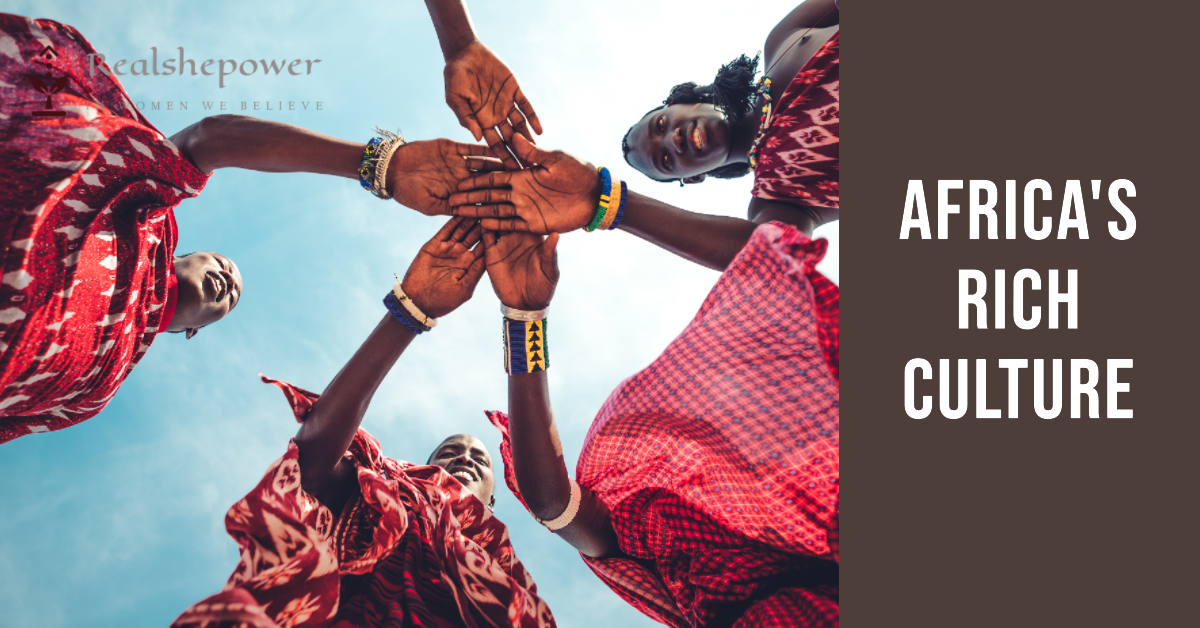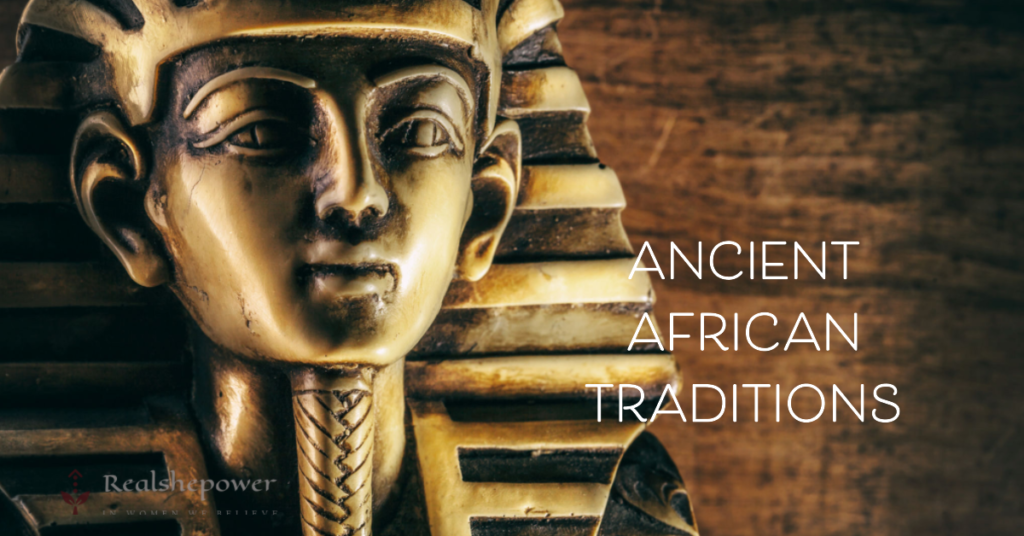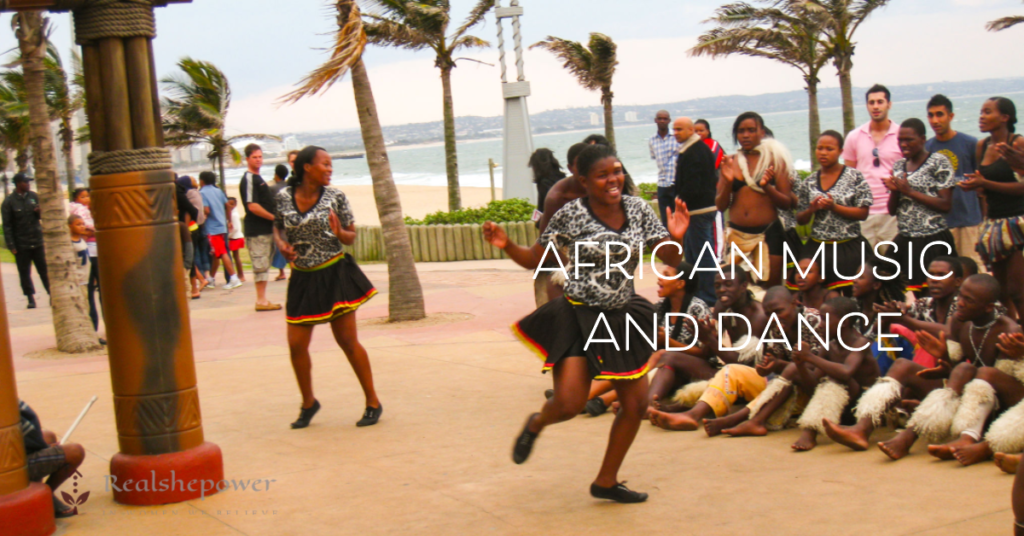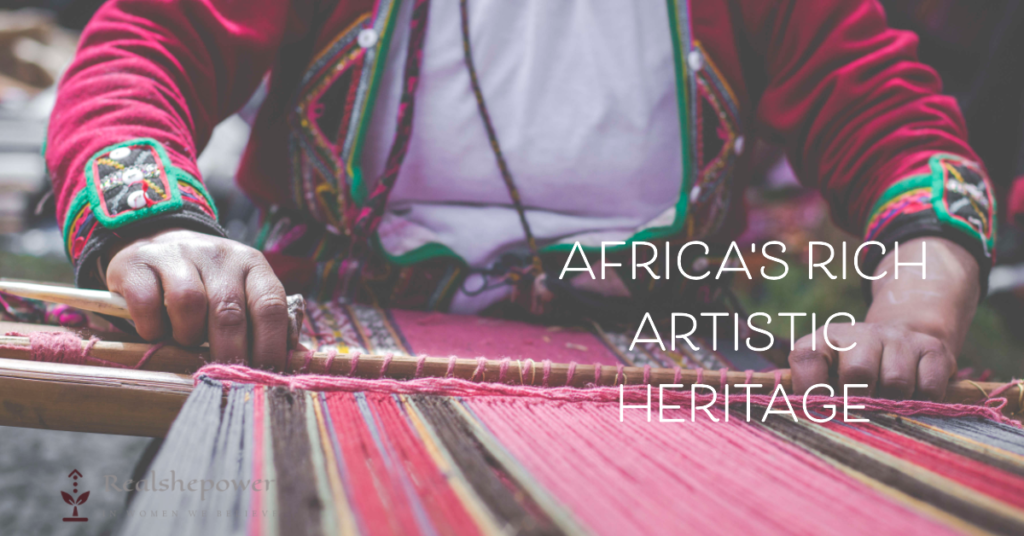Immerse Yourself in Africa’s Rich Culture – A Journey of Colors, Rhythms, and Traditions


Welcome! Immerse yourself in Africa’s rich culture.
Prepare to embark on a remarkable voyage of discovery, where the vibrant colors, enchanting rhythms, and captivating traditions of Africa’s rich culture come alive. Africa, a continent as diverse as the stars in the night sky, holds within its borders an extraordinary tapestry of ancient heritage and modern expressions. From the sweeping savannas of Kenya to the bustling souks of Morocco, every corner of this magnificent land invites you to immerse yourself in its cultural treasures. Leave behind clichéd notions and open your heart and mind to a genuine encounter with the real Africa.
This is not your average tourist cliché – it’s an invitation to embrace the authenticity, vibrancy, and depth that define Africa’s cultural landscape.
So, step into a world where history intertwines with contemporary flair, where traditions sing stories of resilience, and where the spirit of Africa dances in harmony with your soul. Welcome to a journey that will ignite your senses and leave an indelible mark on your heart.
Table of Contents
Exploring Ancient African Traditions

1. Unearthing the Mysteries of Ancient Egypt
Ancient Egypt stands as a testament to the grandeur and sophistication of one of Africa’s most iconic civilizations. From the colossal pyramids of Giza to the enigmatic Sphinx, Egypt’s architectural marvels continue to captivate the imagination of travelers from around the world. But beyond the awe-inspiring monuments lies a complex tapestry of beliefs and rituals that defined ancient Egyptian society.
The Nile River, often referred to as the lifeblood of Egypt, played a crucial role in shaping the civilization’s culture and religious practices. The annual flooding of the Nile brought fertile soil, ensuring bountiful harvests and prosperity. This cycle of abundance and renewal became deeply intertwined with the Egyptians’ spiritual beliefs.
The ancient Egyptians held a strong belief in the afterlife, envisioning it as a continuation of their earthly existence. To prepare for this journey, they meticulously preserved their bodies through the process of mummification. Elaborate tombs, adorned with intricate hieroglyphs and colorful murals, were constructed to serve as eternal homes for the deceased. These tombs, such as the Valley of the Kings, provide invaluable insights into the ancient Egyptians’ reverence for the afterlife.
The pantheon of Egyptian gods and goddesses, led by the mighty Ra, Horus, and Isis, played a central role in daily life. These deities were believed to have control over natural phenomena, ensuring harmony and balance in the world. Temples dedicated to these gods, such as the temple complex of Karnak in Luxor, served as places of worship and pilgrimage.
Today, Egypt’s ancient traditions can still be experienced through immersive tours and visits to iconic sites. Walking in the footsteps of pharaohs, deciphering hieroglyphs, and exploring the hidden chambers of ancient tombs offer glimpses into a civilization that thrived thousands of years ago.
2. Embracing the Maasai Culture
Traveling further into East Africa, we encounter the Maasai people, renowned for their vibrant traditions and nomadic lifestyle. The Maasai, with their distinctive red attire and intricate beadwork, offer a glimpse into a way of life that has remained largely unchanged for centuries.
The Maasai’s deep connection with nature is evident in their harmonious relationship with the land and its wildlife. Cattle, revered as a symbol of wealth and prestige, play a vital role in Maasai culture. Their herds provide sustenance, serve as a status symbol, and are integral to traditional ceremonies and rituals.
Engaging in a traditional Maasai dance is an immersive experience like no other. The rhythmic stomping of feet, accompanied by the haunting chants and the jingle of beaded ornaments, creates an atmosphere of celebration and unity. These dances, often performed during weddings, coming-of-age ceremonies, or to welcome guests, showcase the Maasai’s vibrant cultural identity.
The Maasai’s nomadic lifestyle, characterized by the seasonal movement of their communities, fosters a deep connection with the land. Their profound knowledge of the environment allows them to live in harmony with nature, relying on its resources while preserving its delicate balance.
Visiting a Maasai village provides a unique opportunity to interact with community members, learn about their traditional practices, and gain insights into their values and beliefs. Engaging in conversation, witnessing their skilled craftsmanship, and partaking in their rituals allows for a meaningful exchange that transcends cultural boundaries.
3. Discovering Africa’s Ancient Traditions
Beyond Egypt and the Maasai, Africa is a vast continent brimming with a myriad of ancient traditions. The Dogon people of Mali, known for their intricate knowledge of astronomy, continue to practice their centuries-old rituals centered around the stars. The Oromo people of Ethiopia preserve their rich oral traditions through vibrant storytelling and poetic recitations.
The continent’s diverse indigenous tribes, from the Himba of Namibia to the Zulu of South Africa, each hold a unique cultural tapestry that contributes to the richness of Africa’s heritage. Traditional ceremonies, music, art, and spiritual practices intertwine to create a vibrant mosaic of traditions waiting to be explored and celebrated.
The Rhythms of African Music and Dance

1. Grooving to the Sounds of Afrobeat
One cannot talk about African music without mentioning Afrobeat. Originating in Nigeria in the 1970s, Afrobeat is a genre that blends traditional African rhythms with funk, jazz, and highlife. It was the brainchild of the legendary musician Fela Kuti, who used his music as a platform to address social and political issues.
The infectious rhythms of Afrobeat will make your feet tap uncontrollably. The interplay between the horn section, the pulsating basslines, and the polyrhythmic drum patterns creates a musical landscape that is impossible to resist. Songs like Fela Kuti’s “Zombie” or Tony Allen’s “No Discrimination” are anthems that have stood the test of time and continue to inspire generations.
Whether you find yourself in Lagos, Accra, or London, Afrobeat’s energy transcends borders and unites people from all walks of life. Join the crowd at a vibrant Afrobeat concert, let the music wash over you, and surrender to the irresistible urge to dance. It’s an experience that will leave you feeling alive and connected to the heartbeat of Africa.
2. Celebrating the Salsa Spirit in Africa
While salsa may be considered a Latin dance form, Africa has embraced it with open arms, infusing it with its own rhythmic flair. From Dakar to Cape Town, salsa has found a home on the African continent, captivating dancers and enthusiasts alike.
In cities like Addis Ababa or Dar es Salaam, salsa nights come alive with the vibrant sounds of Latin music fused with African rhythms. The dance floors become a melting pot of cultures, where people from different backgrounds come together to celebrate their shared love for dance.
The salsa scene in Africa is a testament to the continent’s ability to embrace diversity and create something truly unique. African dancers bring their own flavor, blending salsa steps with traditional African movements, resulting in an explosion of energy and creativity. The infectious joy and passion that emanate from the dance floor are contagious, inviting even the most hesitant to join in.
So, put on your dancing shoes and immerse yourself in the salsa spirit of Africa. Feel the heat of the music, let your body sway to the rhythm, and connect with people who share your love for dance. Whether you’re a seasoned salsa aficionado or a beginner taking your first steps, Africa’s salsa scene will welcome you with open arms and guarantee an unforgettable experience.
3. The Magic of African Drumming
Drumming holds a special place in African culture. The rhythm of the drums has the power to evoke emotions, summon spirits, and bring communities together. From djembe drums in West Africa to the talking drums of Nigeria, the variety and richness of African drumming traditions are astounding.
The mesmerizing beats of the drums create a pulse that resonates deep within your being. The polyrhythms and syncopated patterns transport you to another realm, where you become one with the music. In traditional African societies, drumming serves as a means of communication, storytelling, and celebration. It is the heartbeat of the community, connecting people to their roots and ancestors.
Join a drum circle in Senegal’s vibrant markets or witness a traditional drumming performance in Ghana’s Ashanti region. Feel the vibrations coursing through your body, and let the spirit of Africa’s drumming traditions envelop you. It’s a powerful experience that will leave you in awe of the rhythmic prowess and musical heritage of the continent.
4. The Dance of Life
Dance is an integral part of African culture, serving as a form of expression, celebration, and storytelling. Each region, tribe, and community has its own unique dance traditions, reflecting the diverse identities and histories of Africa.
From the acrobatic movements of the Zulu dancers in South Africa to the graceful swaying of the Tuareg women in the Sahara desert, African dance is a captivating display of artistry and emotion. The body becomes a vessel through which stories are told, spirits are invoked, and collective memories are preserved.
Attending a traditional dance performance is like witnessing a piece of living history. The vibrant costumes, intricate footwork, and animated gestures come together to create a spectacle that engages all the senses. Whether it’s the rhythmic gumboot dancing in South Africa or the energetic kizomba in Angola, each dance form carries its own cultural significance and narrative.
Immerse yourself in the dance traditions of Africa, and let your body become an instrument of expression. Join a dance workshop, learn the steps, and allow the music to guide your movements. Experience the joy of being part of a synchronized group, moving in harmony and celebrating life through dance.
The Artistic Expressions of Africa

1. Admiring the Intricate Beauty of African Textiles
African textiles are a sight to behold, showcasing a remarkable blend of skill, tradition, and creativity. From the vibrant kente cloth of Ghana to the delicate mud cloth of Mali, each fabric tells a unique story and carries the essence of African culture.
As you wander through bustling markets and bazaars, you’ll be mesmerized by the colorful displays of fabrics, each boasting its own distinct patterns and symbols. These textiles are meticulously woven or dyed by artisans, using age-old techniques that have been passed down through generations. The result is a kaleidoscope of colors and intricate designs that capture the imagination.
Take a moment to run your fingers over the fabric’s surface, and you’ll feel the texture, the history, and the love poured into every thread. Adorn yourself with these exquisite textiles, and you’ll not only be wearing a piece of Africa but also carrying the stories and traditions of its people with you wherever you go.
2. Unleashing the Power of African Contemporary Art
Africa’s contemporary art scene is a vibrant and dynamic space where artists are pushing boundaries and redefining artistic norms. With a fusion of traditional techniques and modern influences, African artists are creating works that captivate and inspire.
Step into a gallery or an art exhibition, and you’ll be greeted by an explosion of colors, shapes, and textures that demand attention. From thought-provoking sculptures to bold and expressive paintings, African contemporary art invites viewers to explore the complexities of identity, history, and social issues.
One such renowned artist is El Anatsui from Ghana, whose iconic metal sculptures have garnered global acclaim. Using discarded materials such as bottle caps and aluminum cans, Anatsui transforms them into massive shimmering tapestries that reflect the beauty of Africa and challenge notions of waste and consumption.
Esther Mahlangu, a South African artist, has gained recognition for her vibrant and geometric paintings inspired by the Ndebele culture. Her bold use of colors and intricate patterns captivate the eye, celebrating the richness of African heritage and empowering women through art.
The beauty of African contemporary art lies not only in its aesthetics but also in its ability to provoke thought and spark conversations. It serves as a powerful tool for storytelling, social commentary, and cultural preservation.
Whether you’re a seasoned art enthusiast or someone discovering the world of art for the first time, African contemporary art offers a captivating journey that will leave you inspired and moved by its creativity and depth.
3. Preserving African Heritage through Sculpture
Sculpture has played a significant role in African art for centuries, serving as a medium for cultural expression, religious rituals, and storytelling. The mastery and intricacy of African sculptures continue to captivate audiences worldwide.
African sculptures come in various forms, ranging from wooden masks and statues to bronze figures and stone carvings. Each sculpture carries its own symbolic meaning and reflects the traditions and beliefs of the communities from which it originates.
For example, the Baule people of Côte d’Ivoire are renowned for their beautifully carved wooden masks. These masks are used in ceremonial dances and rituals to honor ancestors and communicate with the spirit world. The intricate detailing of the masks, with their elongated faces and delicate patterns, is a testament to the craftsmanship and spiritual significance embedded in each piece.
In Zimbabwe, the stone sculptures of the Shona people have gained international recognition for their powerful and emotive forms. Using a variety of stones, the artists skillfully carve human figures, animals, and abstract shapes that capture the essence of life and spirit. The sculptures often convey messages of unity, family, and respect for nature, reflecting the Shona people’s deep connection with their surroundings.
African sculpture is not merely decorative but rather a conduit for cultural heritage and storytelling. Each sculpture represents a tangible piece of Africa’s rich history, allowing us to connect with the past and appreciate the artistic legacy that continues to shape the continent’s cultural identity.
Immerse Yourself in Africa’s Rich Artistic Heritage

The artistic expressions of Africa are a testament to the continent’s incredible diversity and creative spirit. From the intricate beauty of African textiles to the captivating power of contemporary art and the rich heritage preserved through sculpture, Africa’s artistry invites us to delve into its vibrant tapestry.
As you explore Africa’s artistic wonders, you’ll not only witness the talent and skill of its artists but also gain a deeper understanding of the traditions, stories, and beliefs that have shaped the continent’s cultural mosaic.
Immerse yourself in the colors, textures, and narratives that unfold through African art, and you’ll embark on a journey that celebrates the richness and resilience of Africa’s artistic heritage. It’s time to let the beauty and creativity of Africa captivate your senses and leave an indelible mark on your soul. Immerse yourself in Africa’s rich artistic heritage, and prepare to be amazed.
